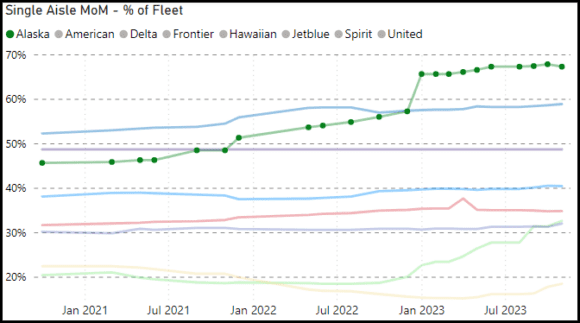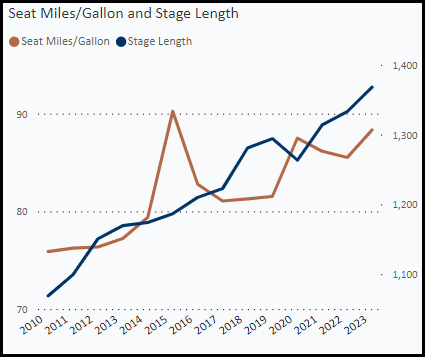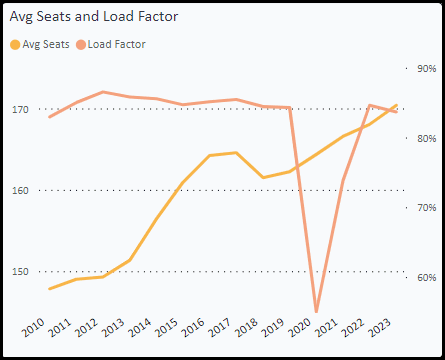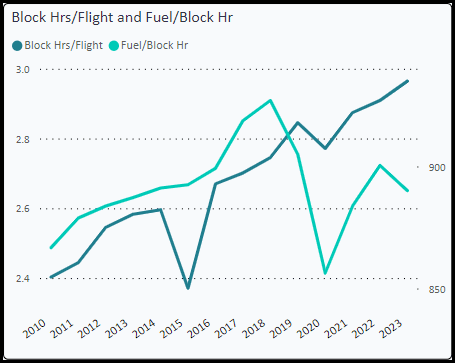
2024 01 05 Alaska Airlines Boeing 737 MAX 9 AS1282 04
The Boeing 737 MAX 9 plays a major role in Alaska’s fleet update. The growth in the MAX 9 fleet is changing the airline’s profile, as the following chart illustrates.

The chart shows that Alaska has the highest percentage of single-aisle MoM aircraft in service among US airlines. This is a meaningful change. Alaska had 65 MAX 9 and 91 -900NGs in service as of the end of 2023. Over 67% of its fleet qualifies as MoM. The loss of the A321s didn’t leave a dent.
To further demonstrate the impact, through the 3Q23, in terms of percentage of flights, Alaska’s 737-900 and MAX 9 fleet performed 61% of flights. This fleet generated ~71% of the airline’s ASMS by 3Q23.
There are some other notable metrics from the evolution of the fleet. First, notice how the more capable aircraft have helped to push stage lengths. At the same time, the MAX 9 offers excellent fuel efficiency, which helps improve the airline’s fuel burn.

Then, look at this chart, listing load factors and average seating per flight. How’s that for a V-recovery in load factor post-pandemic? Alaska’s larger aircraft drive the steady growth in average seat count.

The MAX 9 plays a major role for Alaska Airlines, upsizing and offering more capability with better fuel efficiency. The next chart underscores this. The MAX 9 is a big success story at Alaska Airlines.

The MAX 9 through 3Q23 operated 35% of flights and generated 41% of its ASMs. While only representing 28% of the fleet.
Over the weekend, we have covered the recent MAX 9 event at the airline twice (1, 2). There are several sources to find more background on that story, and we recommend TAC. We want to add a perspective on how impactful a MAX 9 grounding is for Alaska Airlines.
Views: 4




